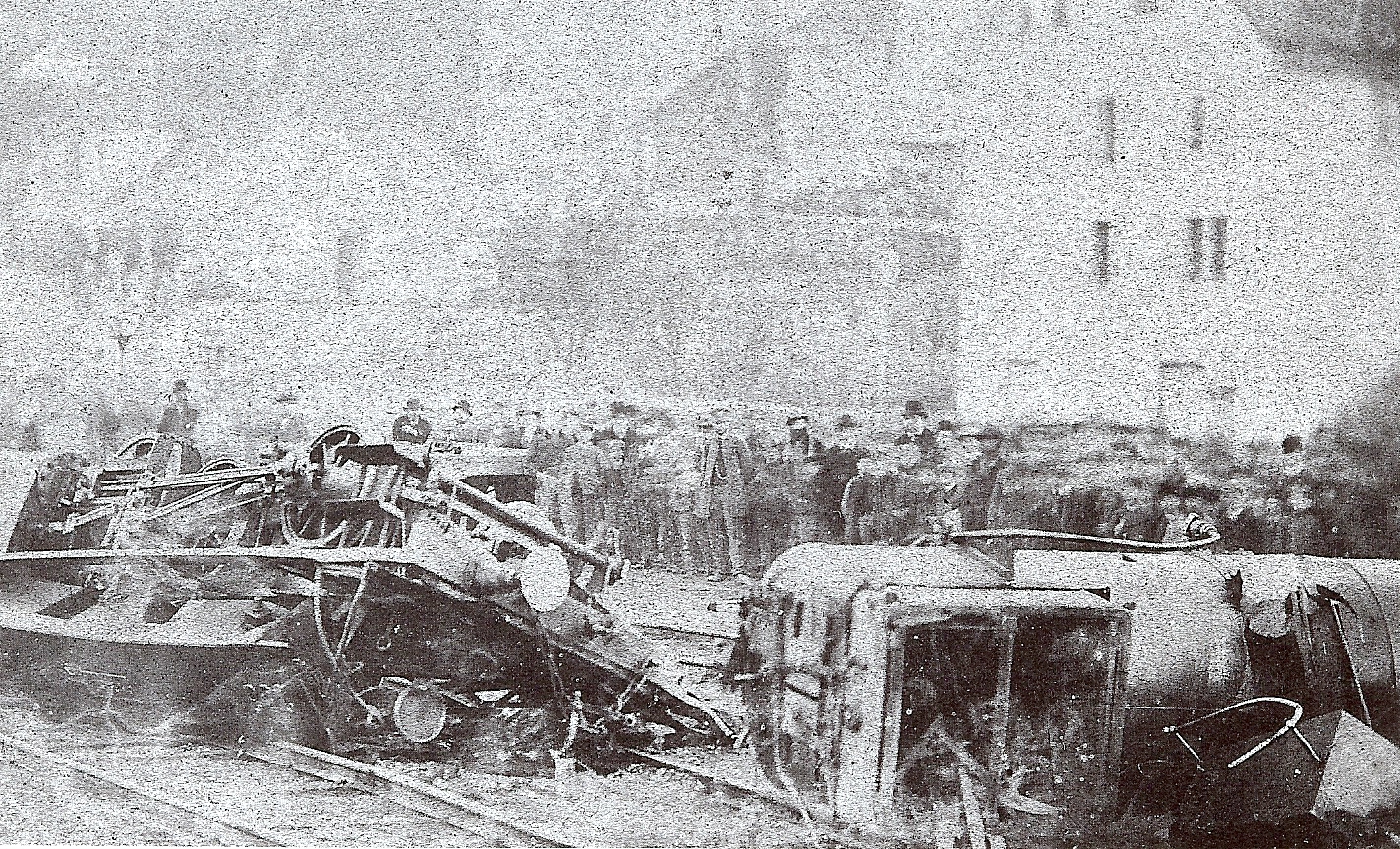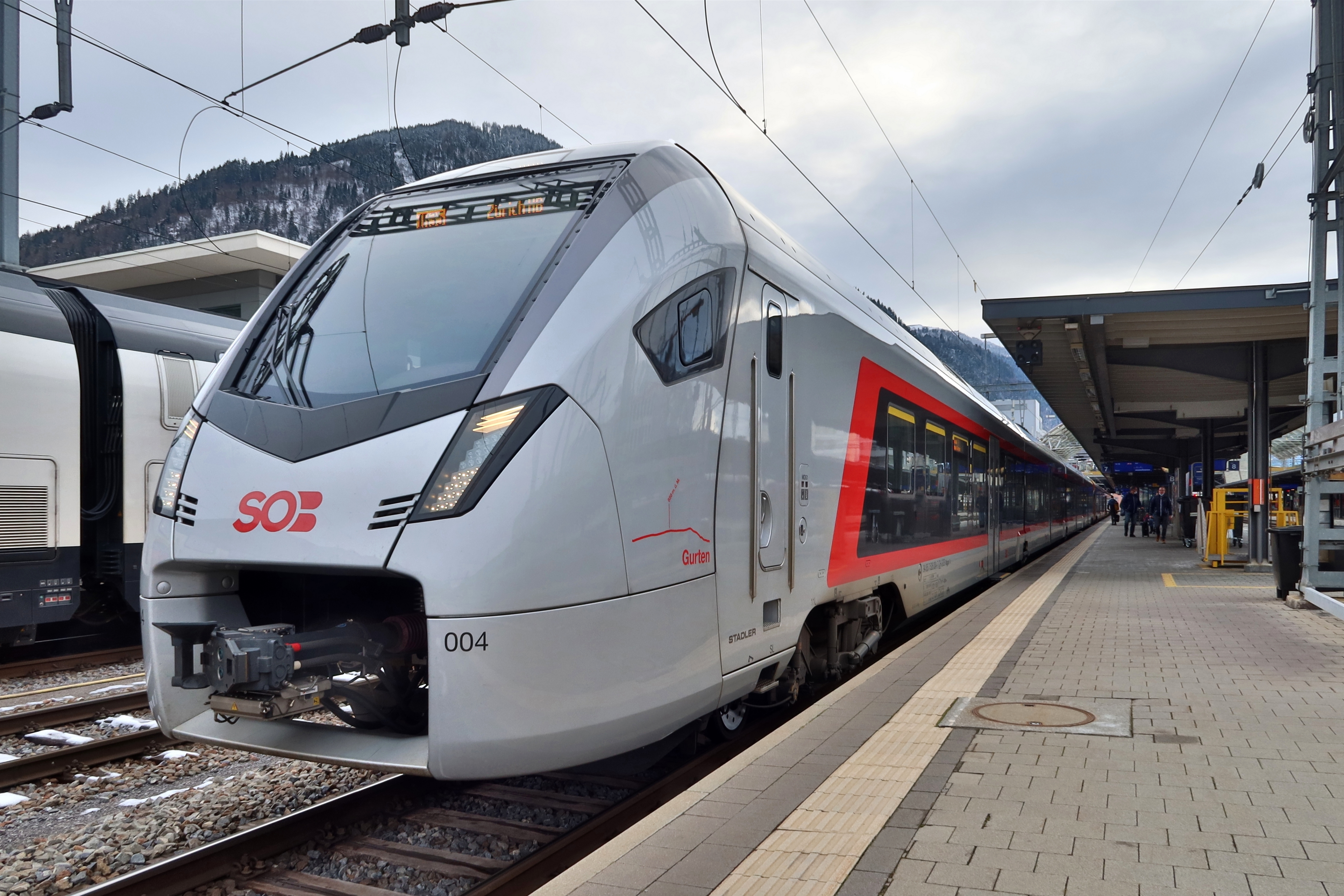|
Wädenswil–Einsiedeln Railway
The Wädenswil–Einsiedeln railway is a largely single-track standard-gauge line in Switzerland. It was built by the ''Wädenswil-Einsiedeln-Bahn'' and is now owned by the Südostbahn, Schweizerischen Südostbahn (SOB). The line between and is 16.64 kilometres-long and was opened on 1 May 1877. It has been electrified since 15 May 1939 at 15 kV AC railway electrification, 15 kV AC 16.7 Hz. History The line was built with a Grade (slope), gradient of 5.0%, since it was initially planned to equip it with the '':de:Walzenradsystems Wetli'' (the Wetli Roller Wheel System). After a serious accident during a test drive on 30 November 1876, it was decided not to use the roller wheel system and to operate the track as a pure adhesion railway. The opening of the single-track line took place on 1 May 1877. The ''Wädenswil–Einsiedeln-Bahn'' merged with the Zürichsee–Gotthardbahn (Lake Zürich-Gotthard Railway) in 1890, in order to promote the construction o ... [...More Info...] [...Related Items...] OR: [Wikipedia] [Google] [Baidu] |
Südostbahn
The Südostbahn (German language, German, ) – commonly abbreviated to SOB – is a Switzerland, Swiss railway company, and a network in Central Switzerland, Central and Eastern Switzerland. It resulted from the merger of the Schweizerische Südostbahn (1890), original SOB with the Bodensee–Toggenburg railway (BT) at the end of 2001. The Schweizerische Südostbahn AG (Swiss South-Eastern Railway SA) is a small private railway jointly owned by the Canton of St. Gallen, cantonal and Federal administration of Switzerland, federal governments as an Aktiengesellschaft (AG). Network The rail network of the Südostbahn (SOB) consists of that formerly owned by Bodensee–Toggenburg railway, BT in Eastern Switzerland, northeast Switzerland (between Lake Constance and Toggenburg): * Romanshorn–St. Gallen St. Fiden railway station, St. Gallen St. Fiden line, * St. Gallen–Herisau–Degersheim–Wattwil line, and * (Wattwil–)Ebnat-Kappel–Krummenau–Nesslau, Nesslau-Neu Sank ... [...More Info...] [...Related Items...] OR: [Wikipedia] [Google] [Baidu] |
Pfäffikon SZ Railway Station
Pfäffikon SZ railway station () is a junction station serving Pfäffikon, the principal town of the municipality of Freienbach, in the canton of Schwyz (SZ), Switzerland. The station is situated at the northern edge of the town, between the town centre and Lake Zurich. The station forms part of the Lake Zürich left-bank railway line, which links Zürich Hauptbahnhof with Ziegelbrücke and Näfels, and is owned and operated by the Swiss Federal Railways (SBB). To the east of the station is the junction for the line to Rapperswil, which crosses Lake Zurich on the Seedamm, whilst to the west is the junction for the line to Arth-Goldau; both these latter being owned and operated by the Südostbahn (SOB). Services the following services stop at Pfäffikon SZ: * InterRegio: ** '' Aare-Linth'': hourly service between and . ** ''Voralpen Express'': hourly service between and . * Zürich S-Bahn: ** : half-hourly service between and . ** : half-hourly service to . ** : hal ... [...More Info...] [...Related Items...] OR: [Wikipedia] [Google] [Baidu] |
Railway Lines In Switzerland
Rail transport (also known as train transport) is a means of transport using wheeled vehicles running in tracks, which usually consist of two parallel steel rails. Rail transport is one of the two primary means of land transport, next to road transport. It is used for about 8% of passenger and freight transport globally, thanks to its energy efficiency and potentially high speed.Rolling stock on rails generally encounters lower frictional resistance than rubber-tyred road vehicles, allowing rail cars to be coupled into longer trains. Power is usually provided by diesel or electric locomotives. While railway transport is capital-intensive and less flexible than road transport, it can carry heavy loads of passengers and cargo with greater energy efficiency and safety. Precursors of railways driven by human or animal power have existed since antiquity, but modern rail transport began with the invention of the steam locomotive in the United Kingdom at the beginning of the 19 ... [...More Info...] [...Related Items...] OR: [Wikipedia] [Google] [Baidu] |
Buffer Stop
A buffer stop, bumper, bumping post, bumper block or stopblock (US), is a device to prevent Railroad car, railway vehicles from going past the end of a physical section of Track (rail transport), track. The design of the buffer stop is dependent, in part, on the kind of couplings that the railway uses, since the Railway coupling, coupling gear is the first part of the vehicle that the buffer stop touches. The term "buffer stop" is of Italian origin, since railways in Italy principally use Buffers and chain coupler, buffer-and-screw couplings between vehicles. Types Several different types of buffer stop have been developed. They differ depending on the type of coupler used and on the intended application. * Buffer stops with anticlimbers. These are particularly important for passenger railway applications, because the anticlimbers reduce the likelihood of Telescoping (railway), telescoping of the Passenger car (rail), railroad cars during a head-on impact. * Buffer stops for ... [...More Info...] [...Related Items...] OR: [Wikipedia] [Google] [Baidu] |
Swiss Northeastern Railway
The Swiss Northeastern Railway (''Schweizerische Nordostbahn''; NOB) was an early railway company in Switzerland. It also operated shipping on Lake Constance (''Bodensee'') and Lake Zürich. Until the merger of the Western Swiss Railways into the Jura–Simplon Railway (JS) in 1890/91, it was the largest Swiss railway company. History The Swiss Northeast Railway was created on 1 July 1853 by the merger of the Swiss Northern Railway (''Schweizerische Nordbahn''—SNB— informally known as the ''Spanisch Brötli, Spanisch-Brötli-Bahn''), and the Zürich-Lake Constance Railway (''Zürich-Bodenseebahn''). The originally planned continuation of the Northern Railway from Baden, Switzerland, Baden to Basel initially failed due to the different interests of the cantons of Canton of Zürich, Zürich, Canton of Aargau, Aargau and Canton of Basel, Basel. The main initiator of the merger were the Zürich-based businessman Alfred Escher, who previously headed the Zürich-Lake Constance ... [...More Info...] [...Related Items...] OR: [Wikipedia] [Google] [Baidu] |
Alt Wädenswil Castle
Alt Wädenswil Castle () is a castle in the Richterswil, municipality of Richterswil and the canton of Zurich in Switzerland. It is a Swiss Swiss inventory of cultural property of national and regional significance, heritage site of national significance. See also * List of castles in Switzerland References External links * Cultural property of national significance in the canton of Zurich Castles in the canton of Zürich Richterswil {{Zurich-geo-stub ... [...More Info...] [...Related Items...] OR: [Wikipedia] [Google] [Baidu] |
Bridge
A bridge is a structure built to Span (engineering), span a physical obstacle (such as a body of water, valley, road, or railway) without blocking the path underneath. It is constructed for the purpose of providing passage over the obstacle, which is usually something that is otherwise difficult or impossible to cross. There are many different designs of bridges, each serving a particular purpose and applicable to different situations. Designs of bridges vary depending on factors such as the function of the bridge, the nature of the terrain where the bridge is constructed and anchored, the material used to make it, and the funds available to build it. The earliest bridges were likely made with fallen trees and stepping stones. The Neolithic people built boardwalk bridges across marshland. The Arkadiko Bridge, dating from the 13th century BC, in the Peloponnese is one of the oldest arch bridges in existence and use. Etymology The ''Oxford English Dictionary'' traces the origin of ... [...More Info...] [...Related Items...] OR: [Wikipedia] [Google] [Baidu] |
Linear Load
In mathematics, the term ''linear'' is used in two distinct senses for two different properties: * linearity of a ''function'' (or '' mapping''); * linearity of a ''polynomial''. An example of a linear function is the function defined by f(x)=(ax,bx) that maps the real line to a line in the Euclidean plane R2 that passes through the origin. An example of a linear polynomial in the variables X, Y and Z is aX+bY+cZ+d. Linearity of a mapping is closely related to '' proportionality''. Examples in physics include the linear relationship of voltage and current in an electrical conductor (Ohm's law), and the relationship of mass and weight. By contrast, more complicated relationships, such as between velocity and kinetic energy, are ''nonlinear''. Generalized for functions in more than one dimension, linearity means the property of a function of being compatible with addition and scaling, also known as the superposition principle. Linearity of a polynomial means that its degree is ... [...More Info...] [...Related Items...] OR: [Wikipedia] [Google] [Baidu] |
Axle Load
The axle load of a wheeled vehicle is the total weight bearing on the roadway for all wheels connected to a given axle. Axle load is an important design consideration in the engineering of roadways and railways, as both are designed to tolerate a maximum weight-per-axle (axle load); exceeding the maximum rated axle load will cause damage to the roadway or railway tracks. Railway use On railways, a given section of tracks is designed to support a maximum axle load. The maximum axle load is determined by train speeds, weight of rails, density of sleepers and fixtures, amount and standard of ballast, and strength of bridges and earthworks. Higher operating speeds can be achieved by reducing axle loads and increased load-carrying capacity. Operating above the specified load can cause catastrophic failure of track components. The diameter of the wheels also affects the maximum axle load of a Talgo RD wagon. United Kingdom The standard rail weight for British railways is now . Befo ... [...More Info...] [...Related Items...] OR: [Wikipedia] [Google] [Baidu] |
Rail Profile
The rail profile is the cross-sectional shape of a Railway track#Rail, rail as installed on a railway or railroad, perpendicular to its length. Early rails were made of wood, cast iron or wrought iron. All modern rails are hot rolled steel with a cross section Profile (engineering), (profile) approximate to an I-beam, but asymmetric about a horizontal axis (however see #Grooved rail, grooved rail below). The head is profiled to resist wear and to give a good ride, and the foot profiled to suit the fixing system. Unlike some other uses of iron and steel, railway rails are subject to very high stresses and are made of very high quality steel. It took many decades to improve the quality of the materials, including the change from iron to steel. Minor flaws in the steel that may pose no problems in other applications can lead to broken rails and dangerous derailments when used on railway tracks. By and large, the heavier the rails and the rest of the track work, the heavier an ... [...More Info...] [...Related Items...] OR: [Wikipedia] [Google] [Baidu] |






